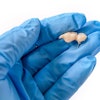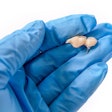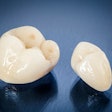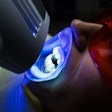Dr. Steven Hernandez, a member of the CDOCS faculty, is here to help you improve your case presentation skills using cone-beam computed tomography (CBCT).
Learn more about Dr. Hernandez and the multiple specialized offerings from CDOCS.
Video transcript
"This is Dr. Steven Hernandez with CDOCS.com, and today, I'd like to show you the power of the software and how you can increase case presentations, especially regarding implants.
"So this patient walks in, and I can see they're edentulous here in the lower right quadrant. I haven't met the patient. They've just arrived. They're a new patient. They're seeing my hygienist.
"Hygienist alerts me that the cone beam is ready, and after I do my radiological review, I want to go ahead and open up the software in the implant suite, and I want to start seeing if I can place this implant, so we know there's a nerve down here. So we're going to go into our panorama, find our nerve. There it is, right there, and I want to quickly trace the nerve implant aligned.
"Now I'm going to put Choose an Implant, Tooth #30. It arbitrarily chooses that we're going to pick something different, and I'm simply going to drop this in here with my left mouse button. Immediately, it shows me a red box saying we're a little too close to the nerve. Shorten the implant.
"Is this the final position? Absolutely not. But it's a quick litmus test to see can I do this case? Is there enough bone, vertically and horizontally for me to do the case? Yes.
"So now when I sit down with the patient in the consult room, here's what I do. I do not want them walking into the consult room seeing all of this. They might ask questions. 'Hey, what's this?' 'What's that?' I do not want the patient driving the conversation.
"So instead, I will simply single click somewhere in my panorama view, touch this icon, and now we have a 'pan,' but their nerve and implant are still visible, so this looks like a little eyeball turn that off, and also the nerve. So now when I sit down with the patient, I can have a conversation, and I can say, 'I noticed also that you were missing a tooth here in the lower right. I wonder if you ever thought of replacing it. Now, if they respond with 'Yes, but never an implant. My father had one, brother, sister, horrible experience. My last dentist tried to push one on me. I left that because I felt like they were high pressure.' Great. I'm never going to show them that I've actually mapped out the nerve and placed an implant.
"However, if they tell me something like, 'I've thought about it, but my last dentist wasn't sure if I was a candidate. They really didn't know where the nerve was, and they weren't sure they were kind of feeling in my mouth. They'd let me know if I could place the implant.' Well, I would respond to the patient, 'I've actually already done surgery on you, and you are a candidate. I can do your implant my office.' That statement 'I've done surgery on you already' usually gets them to cock their head to the side and tell me more.
"Since they've broached the topic and said they're interested in an implant, now I simply uncover and I say, 'Yes, I've actually done virtual surgery on you. Now I show them the power of the software. I know exactly where your nerve is. I know that you've got enough bone quality and density. There's no infection in here. I've got enough space between the other teeth. You're an absolutely a candidate for this in my office.'
"At this point, they're usually wowed by the software and the fact that we can tell them with confidence and certainty that we can do the procedure, and they agree to move forward with the financial arrangements.
"I hope showing you how I present this in what particular order and how I quickly assess whether or not I can even do the case helps me speak with confidence to the patient and also allows me to drive the conversation at my pace. I hope this helps you, and I look forward to seeing you at a future CDOCS course."



















